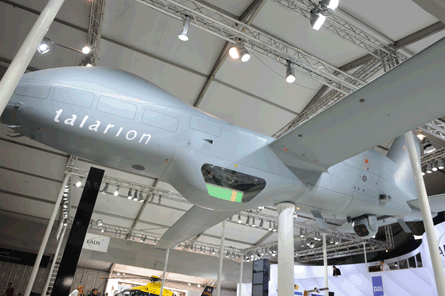A model of its Talarion unmanned air vehicle is suspended over its hall 4 exhibit. But EADS is not happy hanging around for its home nations to commit to what it calls the "next generation" of unmanned surveillance aircraft.
The European company is getting increasingly frustrated with the failure of France, Germany, Spain, and possibly the UK, to throw their support behind the project after EADS unveiled the 28m (91.8ft) wing span aircraft at the Paris air show last year.
Speaking at an EADS media seminar in London on the eve of Farnborough, Stefan Zoller, chief executive of the company's Defence and Security division, said work on the development would continue for the next few months at least. "We are expecting governments to come up with their priorities in autumn," he said.
 |
|---|
© Billypix |
Zoller warned earlier this year that a preliminary design review on the Talarion could be halted unless the programme's potential buyers firmed up their requirements by this summer.
He urged would-be customers to prioritise Talarion to secure Europe's future in unmanned technology. "We need the commitment of the nations to engage in the next generation of unmanned aircraft," he said.
He also cast doubt on whether European countries should focus on unmanned combat air vehicle technology demonstrators to the detriment of a more basic surveillance system, either jointly or on their own. France's Dassault is leading the Neuron UCAV project, while earlier this month the UK's BAE Systems unveiled its Taranis UCAV concept. EADS has its own UCAV demonstrator, the Barracuda.
However Zoller stressed: "The Talarion is not a demonstrator. It is about developing a full industrialised product. Let's do first things first. If countries cannot manage to have the basic technology, you can forget about UCAVs."
Powered by two jet engines and to fly at altitudes up to 50,000ft, the Talarion has been designed to meet Europe's future requirements for intelligence, surveillance and reconnaissance. The company expects the development and production of 15 systems to cost up to €3 billion ($3.5 billion).
- All the latest news, video and images from the 2010 Farnborough air show - New this year, live streaming video of each day's flying display
Source: Flight Daily News
















